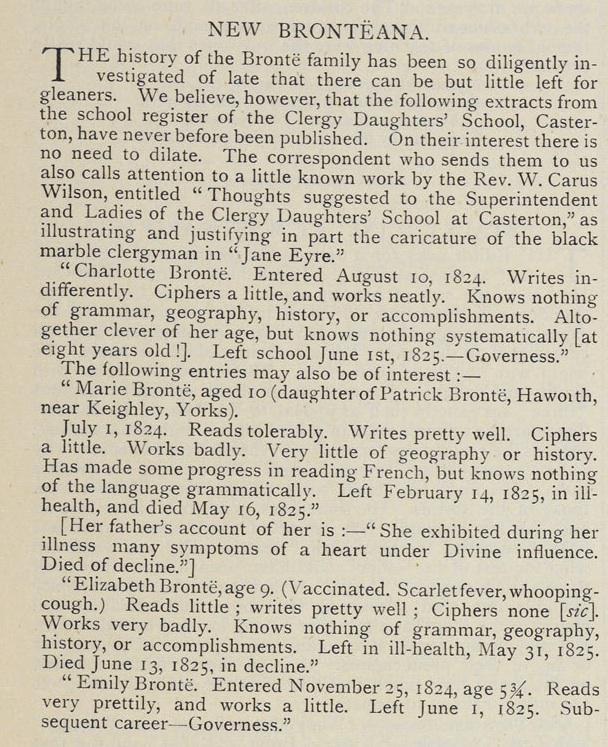The Vault is Slate’s history blog. Like us on Facebook, follow us on Twitter @slatevault, and find us on Tumblr. Find out more about what this space is all about here.
In 1900, noting that fans had lately picked over the history of the Brontë family so “diligently” that “there can be but little left for gleaners,” the British Journal of Education republished these reports on four Brontë sisters’ unhappy year at the Clergy Daughters’ School at Cowan Bridge. The reports, which assess the sisters’ preparation and work during the year they were at the school, are drawn from the school’s register.
Patrick Brontë, a minister, sent his four oldest daughters to this school three years after his wife died. The four siblings were 10, nine, eight, and almost six when they entered, and had had almost no formal schooling.
In its report, the Clergy Daughters’ School described them as knowing little “systematically.” The girls were also assessed for their ability to “work” (or do needlepoint)—a duty some of them performed “neatly” and some “badly.” The description of Charlotte as an “indifferent” writer makes a particular contrast with the feverish intensity with which she and her teenage siblings later produced novels and stories.
Maria and Elizabeth, the two oldest Brontë sisters, died quickly after being sent home from their short stints at Cowan Bridge. “Typhoid fever,” the British Library writes in an entry accompanying their digitized version of this report, “[led] to a number of deaths among its pupils, thought to have been exacerbated by the school’s poor food and harsh regime.” Maria and Elizabeth, escaping typhoid, instead contracted consumption at the school and died (as the terminology of the time had it) “in decline.”
Sally Shuttleworth writes that the description of Jane Eyre’s controlling Lowood Institution, where Jane is sent, was inspired by Charlotte’s time at Cowan Bridge. She suggests that the head of the Clergy Daughters’ School, the Reverend Carus Wilson, may have been the model for Mr. Brocklehurst, Lowood’s tyrannical and unsympathetic master.

The British Library.